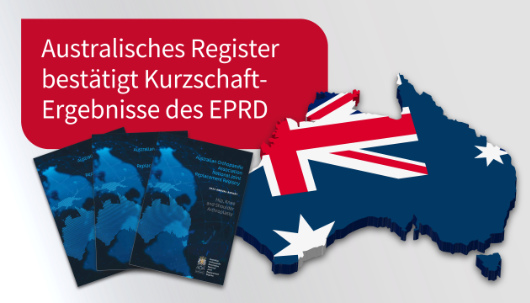
03 Jun Australian Registry confirms EPRD short stem results
Australian Registry confirms EPRD short stem results

In Australia, with 58,529 hip replacements (2023), significantly fewer procedures are performed than in Germany. Given the approximately 27 million people on the Australian continent, this is understandable. Nevertheless, it’s worth taking a look at the “Down Under” hip replacement registry: The registry has existed for 25 years, records treatments almost nationwide, and boasts a dataset of more than 2.1 million hip, knee, and shoulder replacements.
Short, cementless stems with entirely metaphyseal fixation are defined in the registry as “mini-stems.” Six short-stem designs are included in this category. A total of 10,523 procedures were performed with mini-stems. This represents 2.2% of all elective primary hip repairs recorded in the registry. In the 2023 reporting period, 1,417 procedures were performed with this stem category—an increase of 4.3% compared to the previous year.
How do the mini-stems perform in the 2024 Annual Report? The cumulative 9-year revision rate for elective primary total hip arthroplasty using a mini-stem is 2.8%. This is significantly lower than the revision rate for cementless standard stems, which is 4.0%. Parallels can be drawn here with the German Endoprosthesis Registry (EPRD), which also shows better results for short-stem prostheses than for standard stems. Mini-stems also perform better than conventional stems in Australia with regard to age: For patients aged <65 years, the 9-year revision rate is 3.2%, while for patients aged ≥65 years, it is lower at 2.3%.
Different countries, different patient populations, and different care philosophies. What does the Australian care reality actually look like with regard to short stems? We took a look at the latest 2024 annual report of the Australian Orthopaedic Association National Joint Replacement Registry (AOANJRR).

